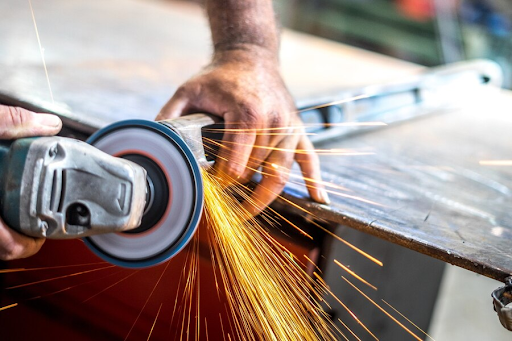In the fast-paced landscape of modern manufacturing, efficiency and versatility are paramount. Traditional grinding methods have long been a staple, but with the advent of hybrid grinding wheels, a new era of machining has dawned. These innovative tools combine the best of both worlds, blending the strengths of different abrasive materials to achieve unparalleled performance. In this article, we delve into the realm of hybrid grinding wheels, exploring their potential to revolutionize modern manufacturing processes.
Understanding Hybrid Grinding Wheels
Hybrid grinding wheels represent a significant advancement in abrasive technology. Unlike conventional grinding wheels, which typically consist of a single abrasive material bonded to a substrate, hybrid wheels incorporate a combination of abrasives to enhance performance. Common combinations include diamond and cubic boron nitride (CBN), diamond and ceramic, or even combinations of different types of abrasives within the same wheel.
The synergy between different abrasive materials allows hybrid grinding wheels to offer unique benefits, such as improved cutting efficiency, extended tool life, and enhanced surface finish quality. By harnessing the strengths of multiple abrasives, these wheels overcome the limitations of traditional grinding methods, opening up new possibilities for modern manufacturing.
Advantages of Hybrid Grinding Wheels
In the ever-evolving landscape of manufacturing, the quest for efficiency and versatility drives innovation at every turn. Hybrid grinding wheels represent a revolutionary leap in abrasive technology, offering a blend of capabilities that redefine the boundaries of material machining.
- Enhanced Cutting Efficiency: The combination of different abrasive materials in hybrid grinding wheels results in superior cutting efficiency compared to conventional wheels. Each abrasive contributes its unique properties, allowing for faster material removal rates and reduced machining times.
- Extended Tool Life: Hybrid grinding wheels exhibit greater resilience and wear resistance due to the synergistic effects of multiple abrasives. This results in longer tool life and reduced downtime for wheel changes, leading to increased productivity and cost savings.
- Improved Surface Finish Quality: The diverse composition of hybrid grinding wheels enables them to produce smoother and more precise surface finishes. By mitigating the drawbacks of individual abrasives, these wheels deliver superior surface quality, meeting the stringent requirements of modern manufacturing applications.
- Versatility Across Materials: Hybrid grinding wheels are capable of machining a wide range of materials, including metals, ceramics, composites, and more. Their versatility makes them suitable for diverse manufacturing industries, from automotive and aerospace to electronics and medical devices.
- Optimized Performance Parameters: Hybrid grinding wheels allow for fine-tuning of performance parameters such as grinding speed, feed rate, and coolant/lubricant usage. This optimization ensures optimal machining conditions and maximizes the efficiency and versatility of the grinding process.
Applications of Hybrid Grinding Wheels
Hybrid grinding wheels find application across various industries and machining processes, including:
- Precision Machining: In industries such as aerospace and automotive, hybrid grinding wheels are used for precision machining of critical components with tight tolerances and high surface finish requirements.
- Tool and Cutter Grinding: Hybrid wheels are employed for sharpening and reconditioning cutting tools, such as drills, end mills, and inserts, to maintain sharp cutting edges and prolong tool life.
- Gear Grinding: Hybrid grinding wheels play a vital role in gear manufacturing processes, ensuring precise tooth profiles and surface finishes for optimal gear performance and durability.
- Surface Grinding: In surface grinding operations, hybrid wheels deliver consistent results across a variety of materials, providing smooth and uniform surface finishes for applications ranging from machine components to consumer electronics.
- Medical Device Fabrication: Hybrid grinding wheels are utilized in the production of medical devices and implants, where precision and surface quality are critical for ensuring patient safety and device functionality.
Optimizing Performance with Hybrid Grinding Wheels
To harness the full potential of hybrid grinding wheels and master efficiency and versatility in modern manufacturing, several key factors should be considered:
- Selection of Abrasive Combinations: Choose the appropriate combination of abrasives based on the material properties, machining requirements, and desired surface finish. Experiment with different combinations to optimize performance for specific applications.
- Grinding Parameters Optimization: Fine-tune grinding parameters such as wheel speed, feed rate, depth of cut, and coolant/lubricant usage to achieve optimal machining conditions and maximize cutting efficiency and wheel life.
- Workpiece Fixturing and Alignment: Ensure proper fixturing and alignment of the workpiece to minimize vibration and runout during grinding operations. Proper workpiece setup is essential for achieving dimensional accuracy and surface finish consistency.
- Tool Maintenance and Dressing: Regularly maintain and dress hybrid grinding wheels to ensure sharp cutting edges and optimal wheel geometry. Proper wheel maintenance helps prevent wheel glazing and maintains cutting efficiency over time.
- Quality Assurance Measures: Implement robust quality assurance measures to monitor and evaluate surface finish quality, dimensional accuracy, and adherence to specifications. Utilize surface roughness measurement techniques and inspection tools to verify compliance with customer requirements.
Conclusion
Hybrid grinding wheels represent a significant leap forward in abrasive technology, offering unmatched efficiency and versatility in modern manufacturing. By combining the strengths of different abrasives, these innovative tools overcome the limitations of traditional grinding methods and open up new possibilities for precision machining. With optimized performance parameters and rigorous quality assurance measures, manufacturers can harness the full potential of hybrid grinding wheels to achieve superior results across a diverse range of applications. As the demands of modern manufacturing continue to evolve, hybrid grinding wheels stand poised to lead the way, driving innovation and efficiency in material machining processes.




